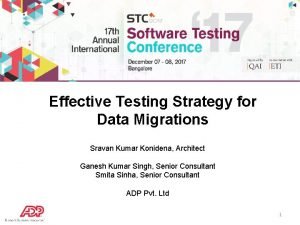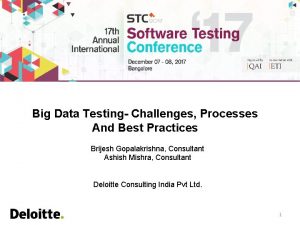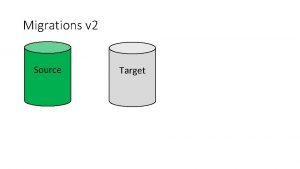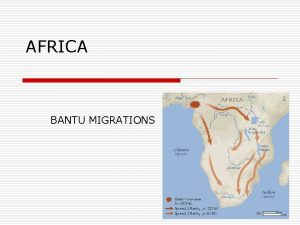Effective Testing Strategy for Data Migrations Sravan Kumar











- Slides: 11

Effective Testing Strategy for Data Migrations Sravan Kumar Konidena, Architect Ganesh Kumar Singh, Senior Consultant Smita Sinha, Senior Consultant ADP Pvt. Ltd 1

Abstract As technology is rapidly changing, enterprise corporations need to bring their clients to modern platforms from legacy systems. Also, in case of company mergers, the clients have to be brought to a single product, post the merger. This makes data migration an important activity to ensure that transition is seamless. This paper is about testing strategy for data migrations covering areas like pre and post data comparison, comprehensive test coverage, automation techniques, etc. 2

Reasons for Data Migrations Decommissioning legacy systems Adding new line of business Relocation of infrastructure Switching Vendors Mergers Consolidation of system 3

Data Migration: Key Risks Data loss Data corruption Application performance issues Prolonged downtime Budget overruns Customer or Brand Impact 4

Data Migration Test Strategy • Establish a migration team • Evaluate business risks and scope of migration • Analyze data transformation from source to destination • Design a roll back strategy in case of failures • Automate the testing process to ensure coverage and speed • Identify defects by performing dry runs on test environments • Perform comprehensive post migration testing • Ensure a seamless transition of the end-user experience 5

Pre-Migration Testing Setup test environment for migration Configure destination system requirements Perform dry runs on test environments Fix defects and certify migration scripts Run reports and save as baseline 6

Post-Migration Testing Verify the migrated data on the UI Run the reports postmigration Compare pre and post migration reports Verify the results and certify the migrations Rollback, in case of any failures 7

Automated Migrations Testing Prepare Test Scripts to capture data - pre & post migrations Build a platform to manage the entire migration process Design logic for data transformation from source to destination Generate reports to analyze failures Execute scripts to compare the data Run automated UI tests for post migration verification 8

Automated Migrations Testing - Benefits Comprehensive coverage High speed • Verify the complete set of data instead of sampling a subset. • Accelerate the process by performing more migrations per batch. Mitigate risks • Avoid sporadic issues and ensure minimum downtime. Reduce costs • Increase reusability with reduced efforts and greater accuracy. 9

Author Biography Sravan Kumar is currently working in ADP as Architect, QA. He has experience on various Test Automation tools/technologies, QA Strategies, Migrations Testing, etc. 10

Thank You!!! 11





















